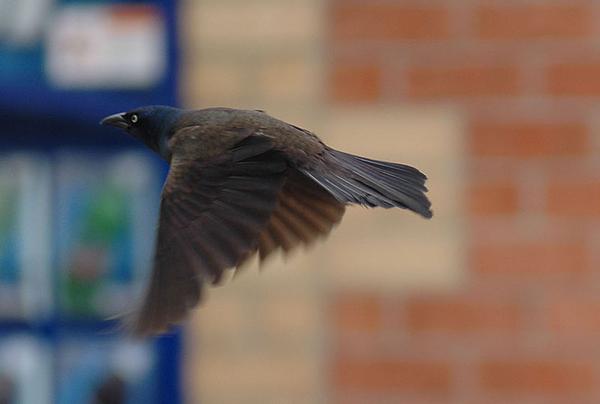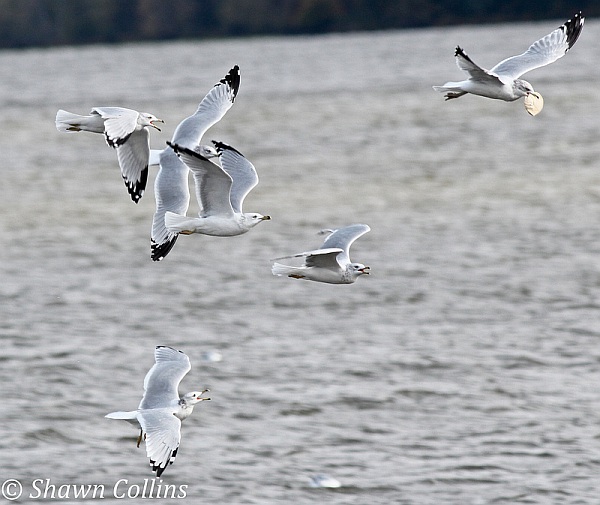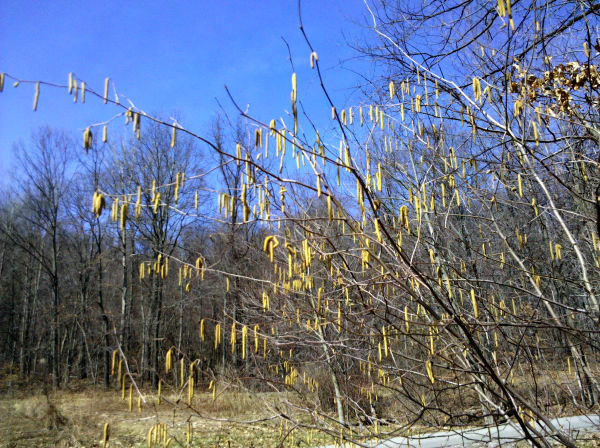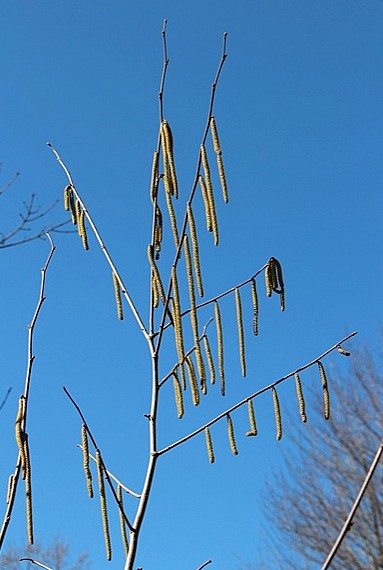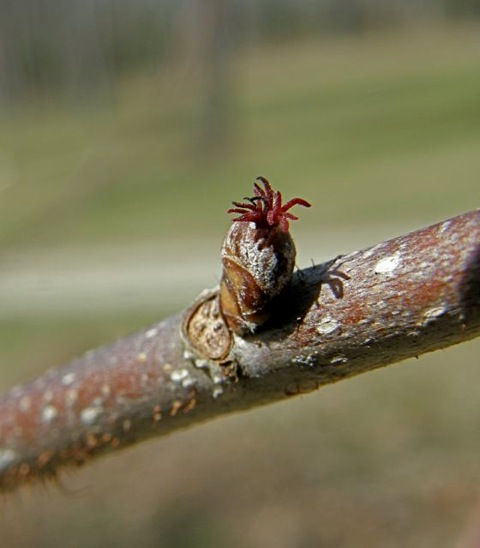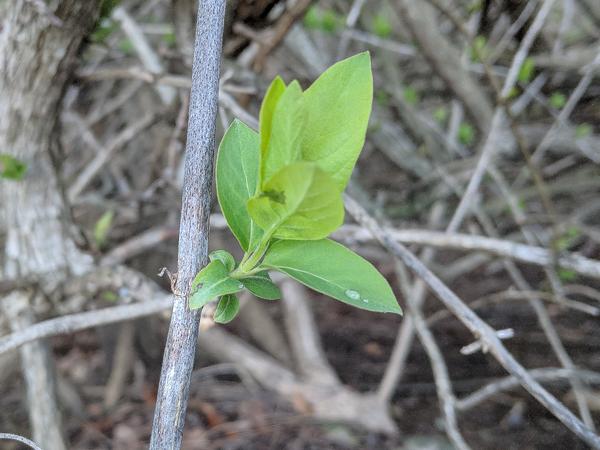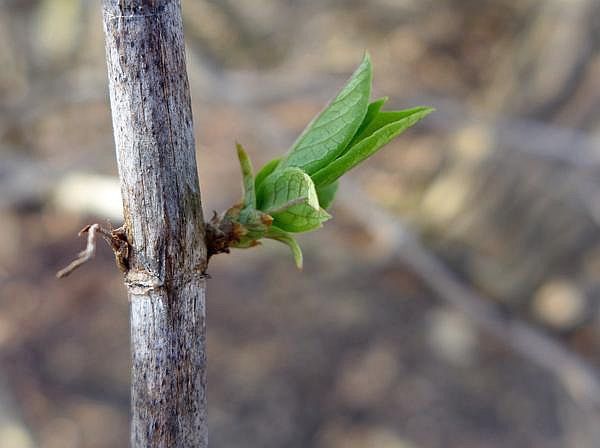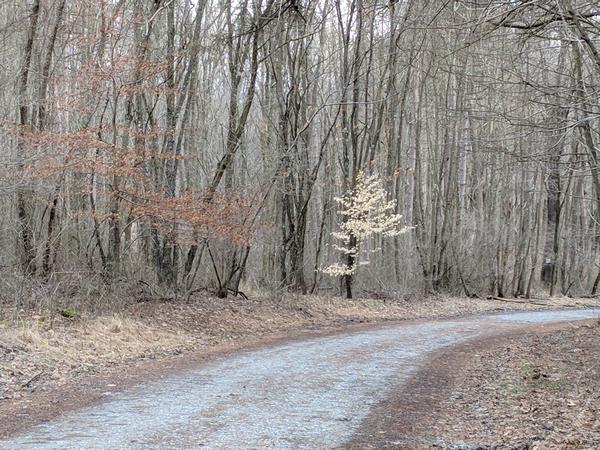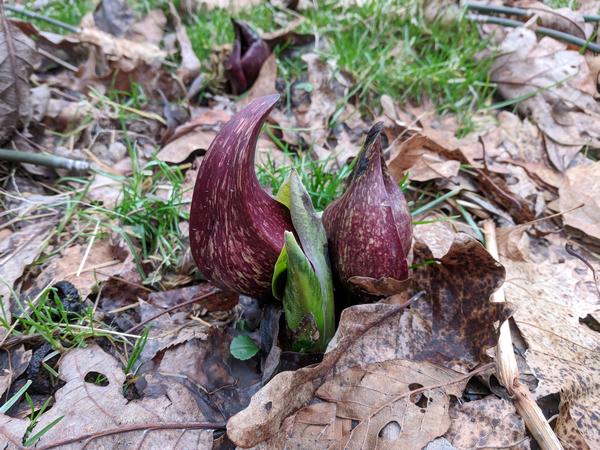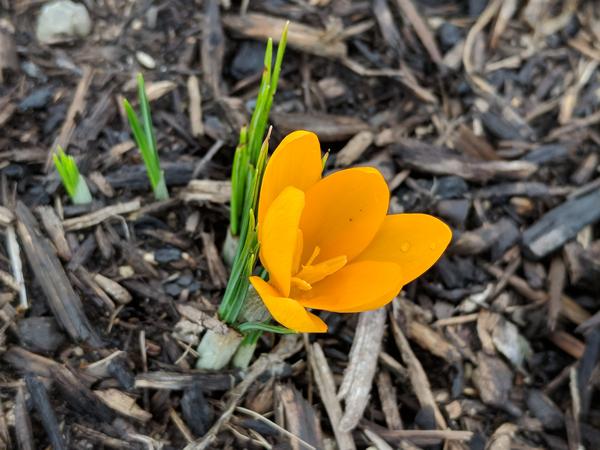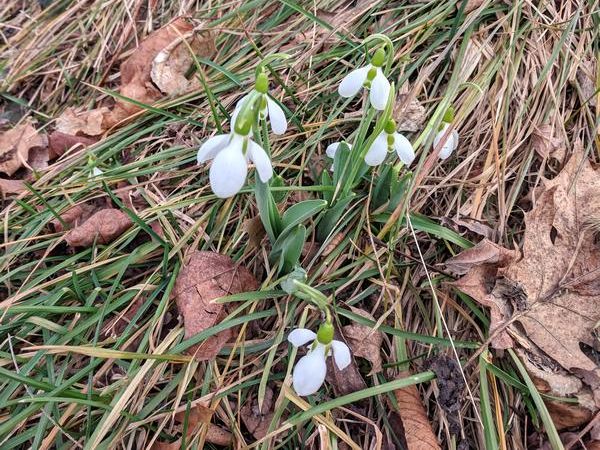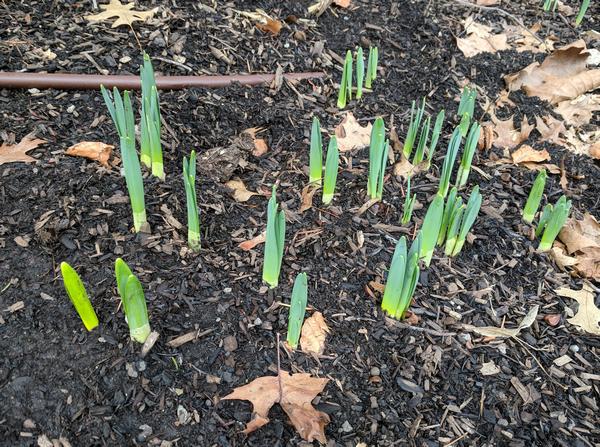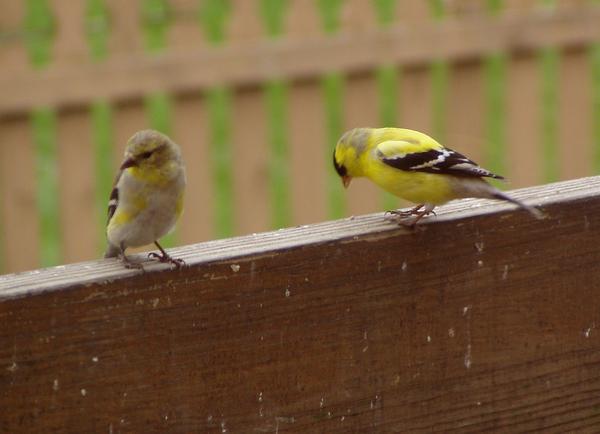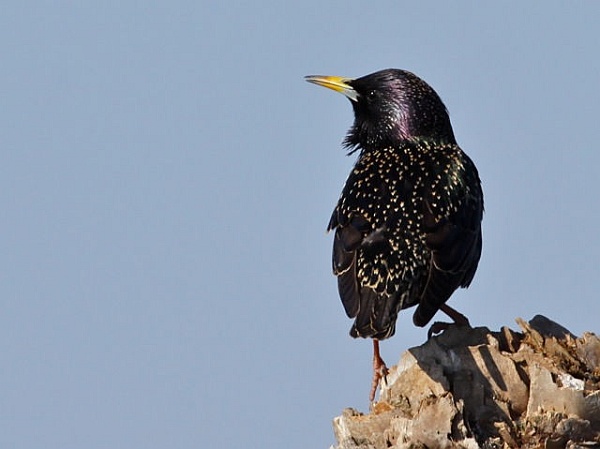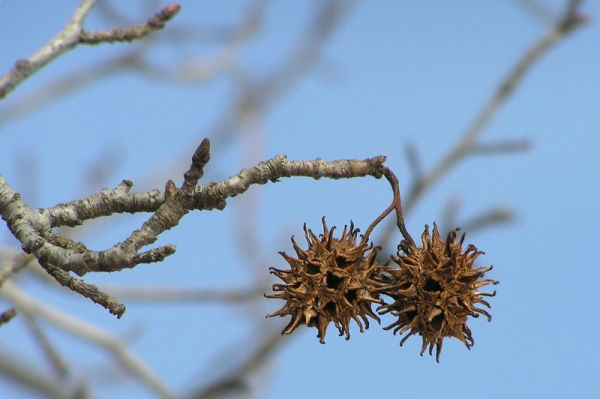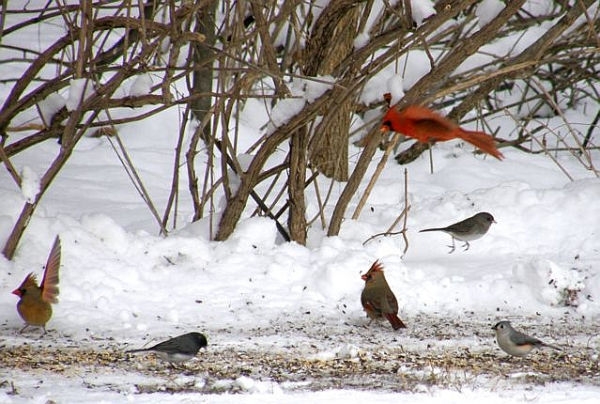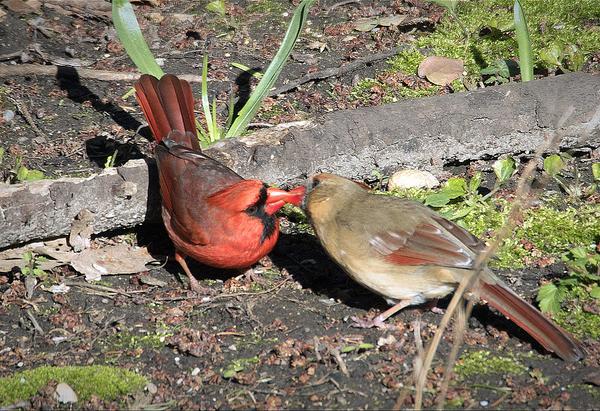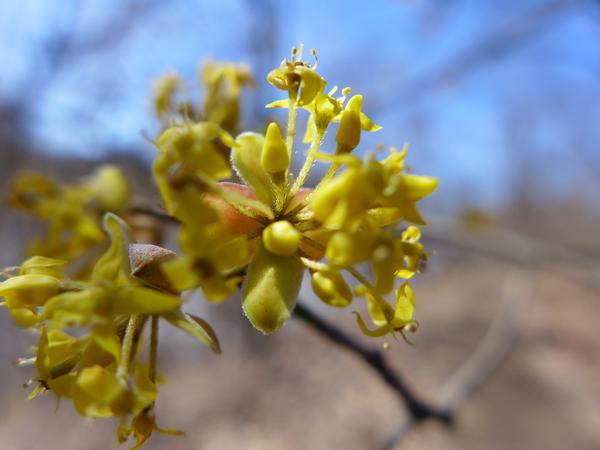
Some yellow flowers bloomed this week.
Above, Cornelian cherry (Cornus mas) opened its buds in Schenley Park and other cultivated locations. Introduced from southern Europe, this small tree is in the dogwood family.
Another Eurasian plant, coltsfoot (Tussilago farfara), started blooming along roadsides in mid March but was suppressed by the 8-10 inches of snow on March 22. It came back quickly last week.
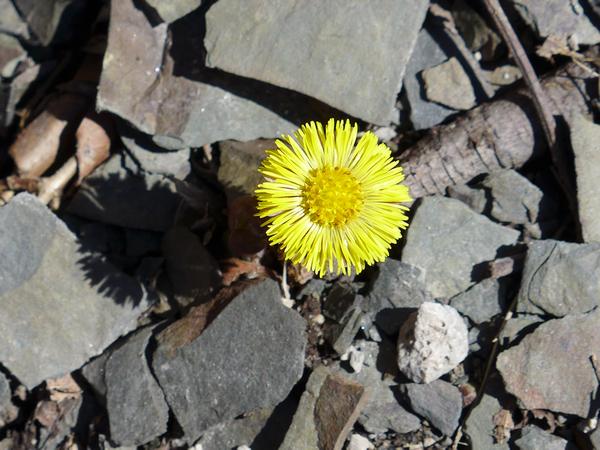
Meanwhile, there’s frost this morning in my backyard. My daffodils are still waiting for better weather.
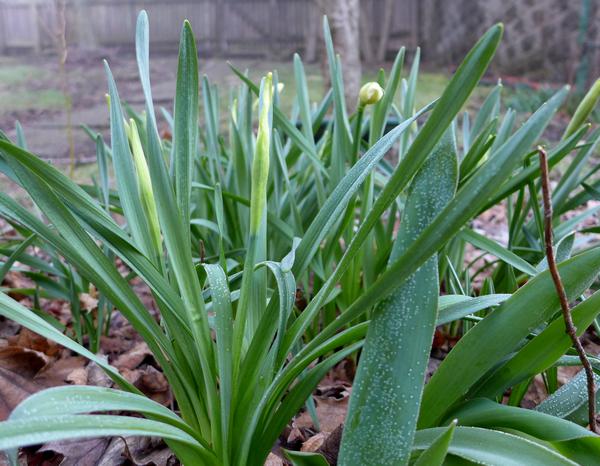
p.s. The air smells bad today in Pittsburgh because industrial pollution is trapped by an inversion. (Rotten egg smell!) Check the Smell Report for March 31 on the map here.
(photos by Kate St. John)
